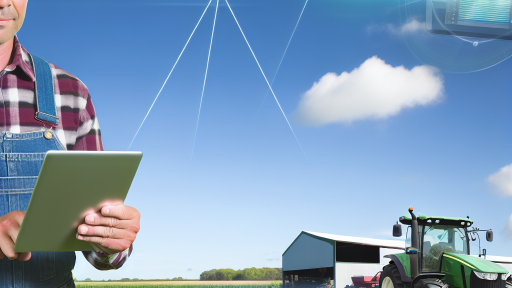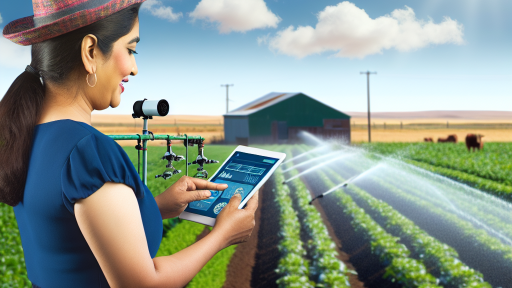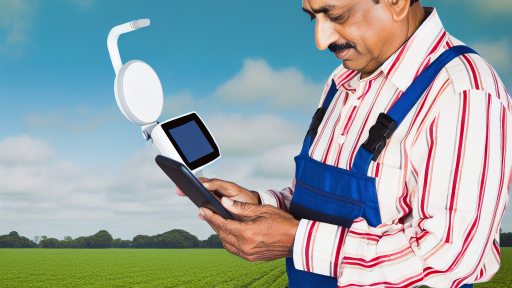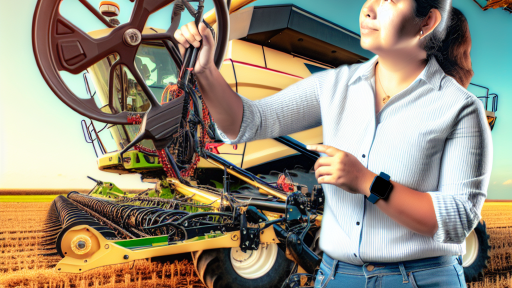Introduction to Robotic Solutions in Agriculture
Robotic solutions are transforming agriculture today.
Farmers increasingly rely on technology for efficient pest control.
Robots offer consistent reliability and precision in pest management.
This approach minimizes the need for harmful chemicals.
Advantages of Robotic Pest Control
Robotic pest control systems provide numerous benefits.
Firstly, they significantly reduce the amount of pesticide used.
Consequently, this helps protect beneficial insects and crops.
Secondly, robots can operate continuously without fatigue.
This feature allows for constant monitoring of crops.
Types of Robotic Solutions Available
A variety of robotic solutions exist for pest control.
Autonomous drones are popular for aerial surveillance.
They can identify pests quickly using advanced imaging technology.
Ground-based robots also play a crucial role.
These machines can apply targeted pesticides effectively.
Challenges in Implementing Robotic Solutions
Despite the advantages, challenges remain in implementation.
Transform Your Agribusiness
Unlock your farm's potential with expert advice tailored to your needs. Get actionable steps that drive real results.
Get StartedThe initial investment in robotic systems can be substantial.
Additionally, farmers may face a learning curve with new technologies.
Integration with existing farming practices also poses challenges.
Nevertheless, the long-term benefits often outweigh these concerns.
The Future of Robotic Pest Control
The future looks promising for robotic pest control.
Emerging technologies assure improved efficiency and sustainability.
Collaboration between tech companies and farmers will drive innovation.
As these solutions evolve, they will become more accessible to all farmers.
Robotic pest control will play a vital role in sustainable agriculture.
Overview of Traditional Pest Control Methods
Chemical Pest Control
Pesticides are commonly used in traditional pest control.
They effectively eliminate a wide range of pests.
These substances can target specific species based on the chemical formulation.
However, their use raises concerns about human health.
Environmental impacts also arise from chemical applications.
Physical Pest Control
Physical methods rely on barriers and traps.
Common tools include nets, fences, and sticky traps.
These methods help prevent pests from accessing crops.
Additionally, they capture or kill pests effectively.
Yet, physical controls may require regular maintenance.
Cultural Pest Control
Cultural practices involve altering the habitat.
Crop rotation is one effective technique.
Farmers can disrupt pest life cycles by changing planting schedules.
Furthermore, introducing beneficial organisms can aid in pest management.
These methods often demand more knowledge and planning.
Showcase Your Farming Business
Publish your professional farming services profile on our blog for a one-time fee of $200 and reach a dedicated audience of farmers and agribusiness owners.
Publish Your ProfileBiological Pest Control
Biological control employs natural predators or parasites.
This method minimizes chemical reliance.
Examples include ladybugs for aphid control.
However, the impact may take time to become evident.
Additionally, the introduction of non-native species can be risky.
Limitations of Traditional Methods
Each traditional method has its drawbacks.
Pesticides may lead to resistance in pest populations.
Physical controls might not manage large infestations effectively.
Cultural strategies can be labor-intensive and knowledge-dependent.
Biological controls require careful monitoring and availability.
Advantages of Using Robotics for Pest Management
Enhancing Efficiency
Robotic solutions simplify pest control operations significantly.
They can work continuously without the need for breaks.
This leads to quicker responses and faster pest elimination.
Moreover, they perform tasks with precision, minimizing mistakes.
As a result, pest control becomes more efficient overall.
Reducing Chemical Usage
Robots can target pests specifically without widespread pesticide applications.
This reduces the overall use of harmful chemicals.
Consequently, it leads to healthier ecosystems and communities.
Additionally, less chemical exposure benefits both human health and wildlife.
Farmers can maintain high standards of environmental responsibility.
Improving Safety
Robotic pest control minimizes human exposure to dangerous chemicals.
This aspect enhances safety for workers in the field.
Furthermore, robots can access hard-to-reach areas without risk.
The reduced physical demands contribute to easier pest management.
Overall, safety becomes a top priority with robotic assistance.
Cost-Effectiveness
Using robotics can lead to significant cost savings over time.
They reduce labor costs by performing tasks usually done by people.
Moreover, fewer pesticide applications lower agricultural expenses.
As a result, farmers and companies see a better return on investment.
This financial benefit encourages more widespread adoption of robotics.
Data-Driven Decisions
Robotic systems can collect and analyze pest data effectively.
This information allows for informed, strategic pest management decisions.
By understanding pest behavior, farmers can apply targeted solutions.
Consequently, they enhance their ability to manage outbreaks.
Such data-driven approaches lead to more sustainable farming practices.
Gain More Insights: Advanced Remote Sensing Techniques for Farming
Types of Robotic Solutions for Pest Control
Autonomous Drones
Autonomous drones use advanced sensors to detect pest activity.
These drones can cover large areas quickly and efficiently.
Moreover, they can gather data for pest monitoring and analysis.
This technology allows for targeted pesticide application.
Showcase Your Farming Business
Publish your professional farming services profile on our blog for a one-time fee of $200 and reach a dedicated audience of farmers and agribusiness owners.
Publish Your ProfileAs a result, it minimizes chemical use and environmental impact.
Ground Robots
Ground robots navigate agricultural fields and gardens effectively.
They identify and target pests using cameras and AI algorithms.
These robots can be programmed to apply pesticides precisely.
Consequently, they reduce labor costs and enhance productivity.
Furthermore, they operate consistently in various weather conditions.
Smart Traps
Smart traps utilize sensors to monitor pest populations.
They can trap pests and send alerts to farmers via mobile apps.
This immediate feedback allows for prompt action against infestations.
Additionally, the data collected assists in understanding pest behavior.
In turn, farmers make informed decisions for future pest management.
Integrated Pest Management Systems
Integrated pest management (IPM) systems combine various robotic technologies.
These systems offer a holistic approach to pest control.
They utilize data analytics to optimize pest control strategies.
As a result, farmers save time and resources with effective solutions.
Moreover, IPM systems enhance sustainability in agriculture.
Explore Further: Enhancing Crop Yields with Smart Irrigation
Case Studies: Successful Implementation of Robotic Pest Control
Innovative Solutions in Agriculture
FarmTech Solutions developed a robotic pest control system for vineyards.
This system utilizes advanced sensors to detect pests accurately.
By targeting specific areas, it reduces pesticide usage significantly.
The company reported a 40% decrease in pest populations within weeks.
Farmers praised the system for its efficiency and effectiveness.
Urban Pest Management
UrbanGuard implemented robotic pest control in major cities.
These robots patrol neighborhoods and identify pest hotspots.
With real-time data analysis, they target infestations promptly.
The initiative led to a 30% reduction in rodent complaints.
Residents appreciated the quieter, chemical-free approach to pest control.
Case Study in a School District
The Riverdale School District partnered with RoboPest Control.
They deployed robots in school gardens to manage pest issues.
The program focused on organic pest management solutions.
Students engaged in learning about technology and ecology.
Feedback indicated a positive impact on student interest in STEM.
Benefits of Robotic Interventions
Robots offer precision and targeted interventions in pest control.
Their ability to operate autonomously saves significant labor costs.
Moreover, they enhance safety by reducing chemical exposure for workers.
These systems maintain efficiency and optimize resource usage.
Consequently, they contribute to sustainable agricultural practices.
Discover More: Vertical Farming Equipment Essentials for Efficient Farming
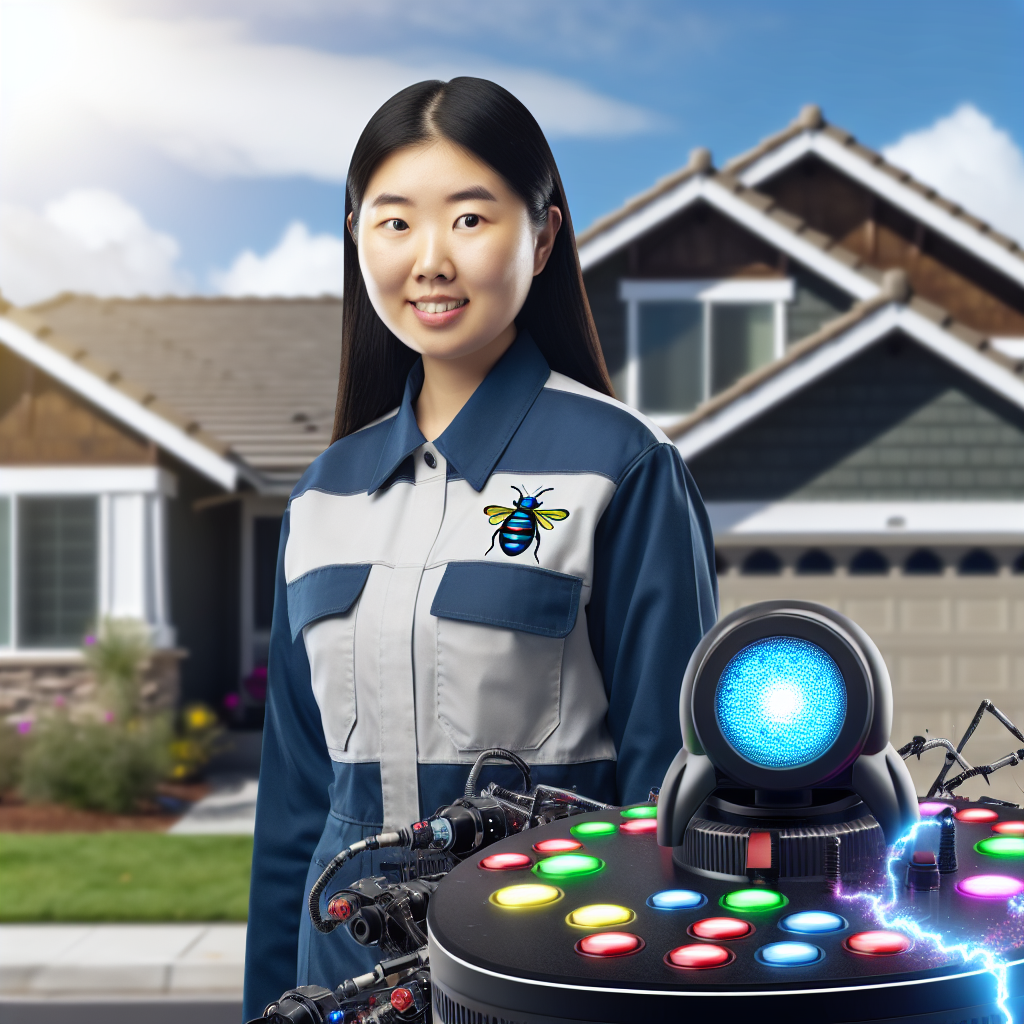
Challenges and Limitations of Robotic Pest Control Technologies
Technological Limitations
Robotic pest control technologies face various technological limitations.
These constraints hinder their overall effectiveness.
Showcase Your Farming Business
Publish your professional farming services profile on our blog for a one-time fee of $200 and reach a dedicated audience of farmers and agribusiness owners.
Publish Your ProfileFor instance, many systems struggle with identifying multiple pest species accurately.
Furthermore, environmental conditions can disrupt sensor performance.
In addition, the initial cost of these technologies remains high for widespread adoption.
Operational Difficulties
Operational challenges complicate the implementation of robotic pest control.
Field conditions can vary greatly, affecting robot maneuverability and efficiency.
Moreover, routine maintenance is necessary to ensure optimal functioning.
Such requirements can increase labor costs and operational downtime.
Regulatory and Environmental Concerns
Regulatory hurdles present additional challenges for robotic pest control solutions.
Many regions impose strict guidelines regarding pesticide usage.
This limits the integration of robotics with traditional pest management practices.
Environmental impacts also raise concerns among stakeholders and consumers.
Public perception of robotic solutions may hinder acceptance in agricultural settings.
Economic Factors
Economic considerations play a crucial role in the adoption of robotic technologies.
The initial investment can be prohibitive, especially for smaller farms.
Moreover, ongoing costs for repairs and upgrades can add financial pressure.
Farmers must weigh these expenses against potential benefits.
Integration with Existing Practices
Integrating robotic pest control into existing agricultural practices poses challenges.
Farmers must adjust their workflows to accommodate new technologies.
This adjustment can disrupt established routines and practices.
Training is often necessary to ensure effective utilization of robots.
Learn More: Choosing the Right Sensors for Your Crops
Future Trends in Agricultural Robotics for Pest Management
Emerging Technologies
Robotic solutions in agriculture are evolving rapidly.
New technologies enhance pest detection and management capabilities.
These advancements include improved sensors and AI integration.
For instance, drones now feature high-resolution imaging for monitoring crops.
They can capture pest infestations more accurately than traditional methods.
Precision Agriculture
Precision agriculture optimizes inputs while minimizing waste.
Robotics plays a key role in achieving this efficiency.
Autonomous robots can apply pesticides selectively and effectively.
This reduces chemical usage and lowers environmental impact.
Farmers benefit from cost savings and increased crop yields.
Collaborative Robotics
Collaborative robots, or cobots, work alongside human operators.
They can assist with tedious or dangerous tasks related to pest control.
These robots enhance safety and boost productivity on farms.
For example, a company called AgriBotix develops cobots for this purpose.
Such partnerships lead to a more efficient agricultural workflow.
Sustainability and Environmental Impact
Robotic solutions support sustainable agricultural practices.
They reduce the reliance on chemical pest control methods.
Furthermore, they promote less intrusive approaches to pest management.
This shift aligns with consumer demand for eco-friendly products.
Showcase Your Farming Business
Publish your professional farming services profile on our blog for a one-time fee of $200 and reach a dedicated audience of farmers and agribusiness owners.
Publish Your ProfileFarmers focusing on sustainability can gain a competitive edge.
Data Analytics and Machine Learning
Data analytics enhances decision-making in pest management.
Robots collect vast amounts of data during their operations.
Machine learning algorithms process this data to improve outcomes.
Farmers receive actionable insights to tailor their pest control strategies.
As a result, they can react more swiftly to pest threats.
Integration with IoT
The Internet of Things (IoT) revolutionizes agricultural processes.
Smart sensors relay real-time data from the fields.
Robotic systems utilize this data for timely pest interventions.
Connected devices improve communication between farmers and their equipment.
This interconnectedness fosters a proactive approach to pest management.
The Impact of Robotics on Sustainable Farming Practices
Advantages of Robotic Solutions
Robotic solutions enhance precision in pest control methods.
They reduce reliance on harmful chemical pesticides.
This leads to healthier crops and ecosystems.
Moreover, robots can operate continuously, improving efficiency.
They also provide data collection, benefiting farm management.
Integration with Existing Practices
Farmers can integrate robotics seamlessly into their practices.
For example, drones can monitor crop health and pest levels.
This helps in timely interventions, minimizing damage.
Additionally, soil and yield analysis can be improved through automation.
Cost Effectiveness
Initially, investing in robotic technology can seem costly.
However, the long-term savings can be significant.
Reduced pesticide costs and higher yields contribute to profitability.
Farms can also benefit from lower labor costs over time.
Environmental Considerations
Robots contribute to sustainable farming practices that protect the environment.
By minimizing chemical use, they safeguard water sources.
Furthermore, they help maintain biodiversity in agricultural settings.
This approach promotes a healthier ecosystem overall.
Future of Robotics in Agriculture
The future of agriculture looks promising with robotics advancement.
Innovations will continue to improve efficiency and sustainability.
Furthermore, ongoing research will expand robotic capabilities.
Farmers can expect more personalized and effective solutions.
Additional Resources
Enhancing precision agriculture: A comprehensive review of …

